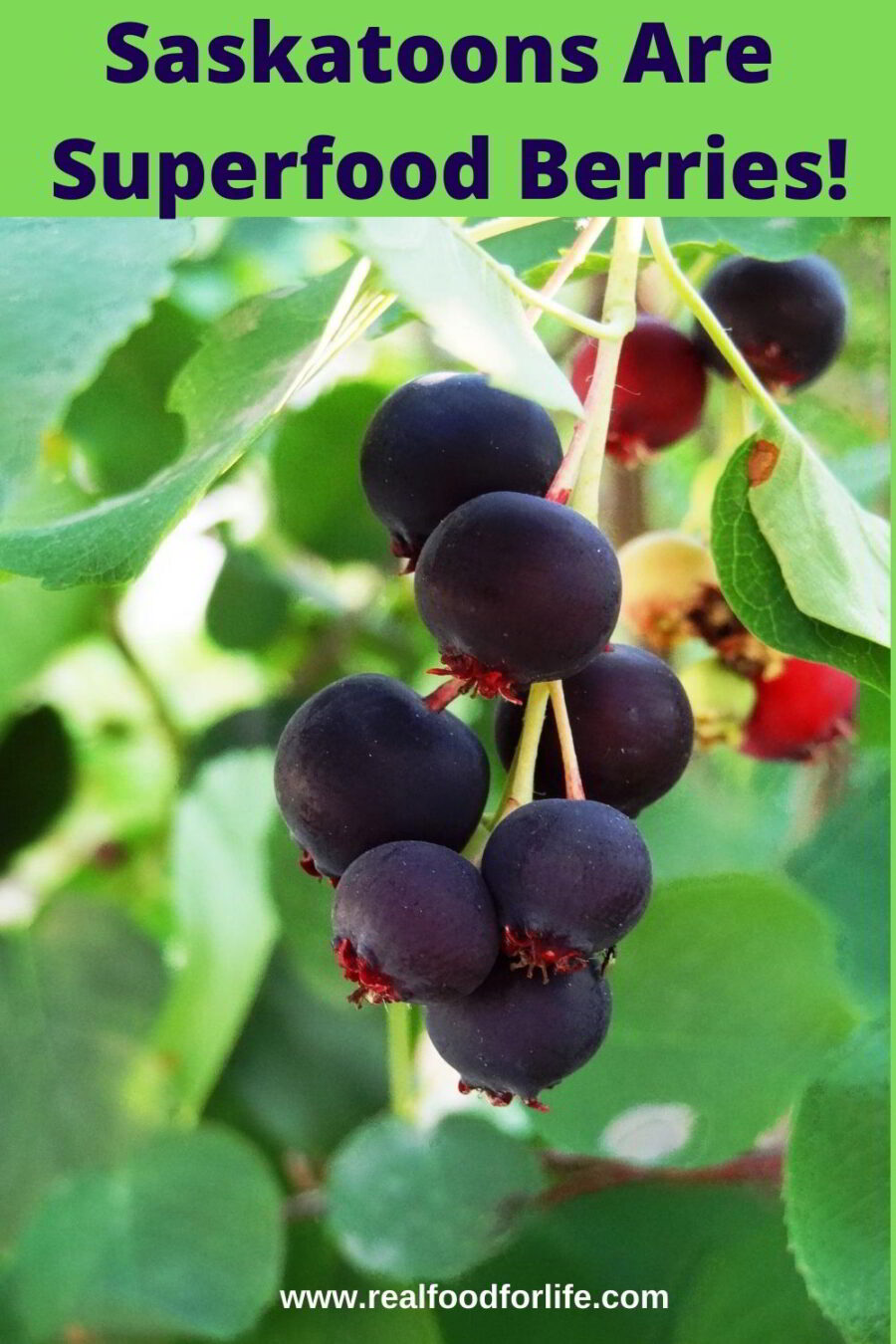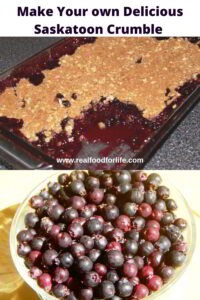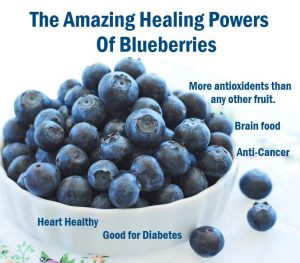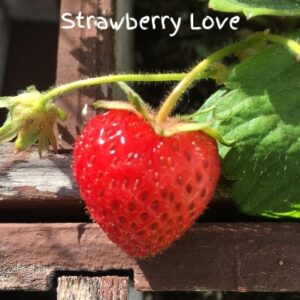I go out picking Saskatoons as soon as they are ripe as they are in my opinion the best berry. I make sure to freeze lots of them to last the whole winter. If you cannot pick them; you will often find them sold in farmer’s markets in Canada.

I even planted two bushes in my front yard so that I have some near. They are full of showy flowers in the spring, colorful berries in the summer, and then beautiful leaves in the fall.
As a child, my father would load all five of us kids into his blue Chevy pickup truck with buckets for all. We would drive out hunting near the woods, creeks, and river valleys. We loved going to pick saskatoons because we loved the taste of them thus we would always come back with full tummies and of course full buckets too. Back then my mother would preserve dozens of jars of them for us to eat in the winter. I fondly remember those delicious jars of berries I helped my mother make for us – so delicious.
Now I freeze them which is easier and more nutritious than preserving them.
For the North American Indian people, Saskatoons were a staple food. Often tribes held ceremonies and feasts to celebrate the beginning of the Saskatoon harvest. The Cree name for this plant is “mis-ask-quah-toomina” which early settlers shortened to “saskatoon.”
In parts of the NW US & Europe; they are called June Berries, Service Berries, or Shadbush.
Settlers to our country saw the potential of these berries and added them to their diet. Also, note that they were an important food source during the depression in the 1930s. So let’s add these wild and free berries to our diet.
- Packed with antioxidants – mighty fixers for the body which repair the damage, prevent heart disease and slow down aging.
- They have over six times the amount of calcium as blueberries (see Saskatoon study).
- Have twice the manganese of blueberries.
- Has more protein, fat, fiber, and iron than blueberries.
- While the berry has been used for liver troubles and diarrhea, its inner bark or roots were a remedy for constipation.
- A 100 gm serving has 22 percent of your daily requirement for iron.
- Like all fruit, it has natural sugars or smart carbs, so you don’t deal with the dangers of white sugar.
- Because of all this power-packed nutrition, we put them in the category of superfoods, like seaweed, spinach, and cabbage.
They will supply you with important nutrients as well as being so yummy!
Nutrients in Saskatoon berries:
A 100-gram serving will supply:
22.3% of recommended daily iron
244 mg of potassium or 10% of daily needs
88 mg or 11% of daily calcium requirements
20% of carotene
16 mg of Vitamin C
2.5% of zinc and 33.8% of manganese
32 mg of phosphorus or 1.1%
Interesting Facts:
- It has one to four teeny tiny seeds inside which you usually don’t notice.
- Was a staple food for the North American Indian people. Tribes held ceremonies and feasts to celebrate the beginning of the Saskatoon harvest.
- The Cree name for this plant is ‘mis-ask-quah-toomina’ which early settlers shortened to ‘saskatoon.’
- The city named after this berry has the most hours of sunshine and the fastest economic growth of any city in Canada. The legendary Joni Mitchell grew up there.
What do they taste like?
This, of course, is a difficult question to answer. Although similar to blueberries, they have a fuller flavour and have slightly crunchy tiny almond-flavored seeds inside.
Picking Saskatoons
Pick the berries that are mostly purple as these are the ones that are ripe and sweet. The branches bend down allowing one to reach higher berries.

Watch my video about Saskatoons: The Joy of Saskatoon Berries!
Here is One Simple Saskatoon Recipe
 Saskatoon Crumble is Gluten-free and Tasty – As you will know by reading my article, Saskatoons are my favorite and I am happy to eat them just as they are. For fun I do enjoy a crumble or pie so here is the yummy crumble recipe.
Saskatoon Crumble is Gluten-free and Tasty – As you will know by reading my article, Saskatoons are my favorite and I am happy to eat them just as they are. For fun I do enjoy a crumble or pie so here is the yummy crumble recipe.
As I don’t use sugar for my baking I often use stevia which is the healthy option. The stevia plant is incredibly sweet and also incredibly good for you. The leaf is 30 times sweeter than sugar while extracts are 300-400 times sweeter. The best stevia will, therefore, be the one that retains some whole food value and is water-based. Liquid forms will be less processed. Go here to learn How to Get the Best Stevia Without the Bitterness.
Find out more about the health benefits of other delicious berries:
 Did you know that blueberries have more antioxidants than any other popular fruit and help prevent cancer, diabetes, age-related memory loss and are anti-inflammatory? They are also rich in potassium, fiber, and vitamins A & C.
Did you know that blueberries have more antioxidants than any other popular fruit and help prevent cancer, diabetes, age-related memory loss and are anti-inflammatory? They are also rich in potassium, fiber, and vitamins A & C.
Raspberries are a red sweet juicy delight to see and eat. They keep your metabolic rate high with high levels of the trace mineral manganese and are one of the top 10 antioxidant-rich fruits. They are high in vitamin c and have more fibre than most fruits and vegetables.
 Strawberries are considered to be one of the healthiest fruits. They are packed with antioxidants, lower blood pressure, and protect your heart. Also, full of essential vitamins and minerals, and are also sodium, cholesterol, and fat-free.
Strawberries are considered to be one of the healthiest fruits. They are packed with antioxidants, lower blood pressure, and protect your heart. Also, full of essential vitamins and minerals, and are also sodium, cholesterol, and fat-free.
Tart little cranberries are a powerful fruit packed with surprising health benefits. You may have heard cranberries are helpful in urinary tract infections but they also have many other health benefits. They are one of the special superfoods that are good for the heart and teeth and help protect you from cancers.


so, are they like a cross between a blueberry and a cranberry?
Annie, not really as saskatoons are not at all tart. They are like a blueberry but with a stronger taste and more fibre. You will have to come to where we live as there are lots of saskatoons here. 🙂
saskatoon “berries” or- better -“pears’” are my absolute favorite.
awesome! very cool you have so many berries around! 🙂
Yes Denise it is wonderful; I love gathering wild food.
also known as shadbush, shadwood or shadblow, serviceberry or sarvisberry, wild pear, juneberry, saskatoon, sugarplum or wild-plum, and chuckley pear is a genus of about 20 species of deciduous-leaved shrubs and small trees in the Rose family (Rosaceae).Here in Ontario we call them Sugar Plums
Thank you Judy for the extra names; I had no idea that they were called Sugar Plums in Ontario.
Can anyone advise me if I can buy some starter Sugarplum plants in Ontario. I am from the Barrie area. Thank you
Diana Herriington please e-mail me.
Diana Herrington please e-mail me: kerrypinkerton@mail.com
I summer in Coeur d’ Alene Idaho and wonder if I could raise them here? If so , how would I get some seeds to start?
Thank youfor any information you may supply
Kathy. Huffman
Kathy, I’m not sure. Have never seen seeds for them. Usually, we buy a plant and it expands. Will look into it.
I’m living north of Couer d’Alene and they grow wild all over here. You will see them in bloom all along 95 in springtime, covered in 2” multi pealed white flowers.
Here they are generally referred to as service berries and the variety is a bit tart, but very sweet in wetter years. I propagate them to add interest in my wooded hillside. My chickens absolutely love the berries.
Very informative article, I had heard, but not seen SERVICE berries, I may have eaten them in the high areas of Washington , but thought they were large blueberries.